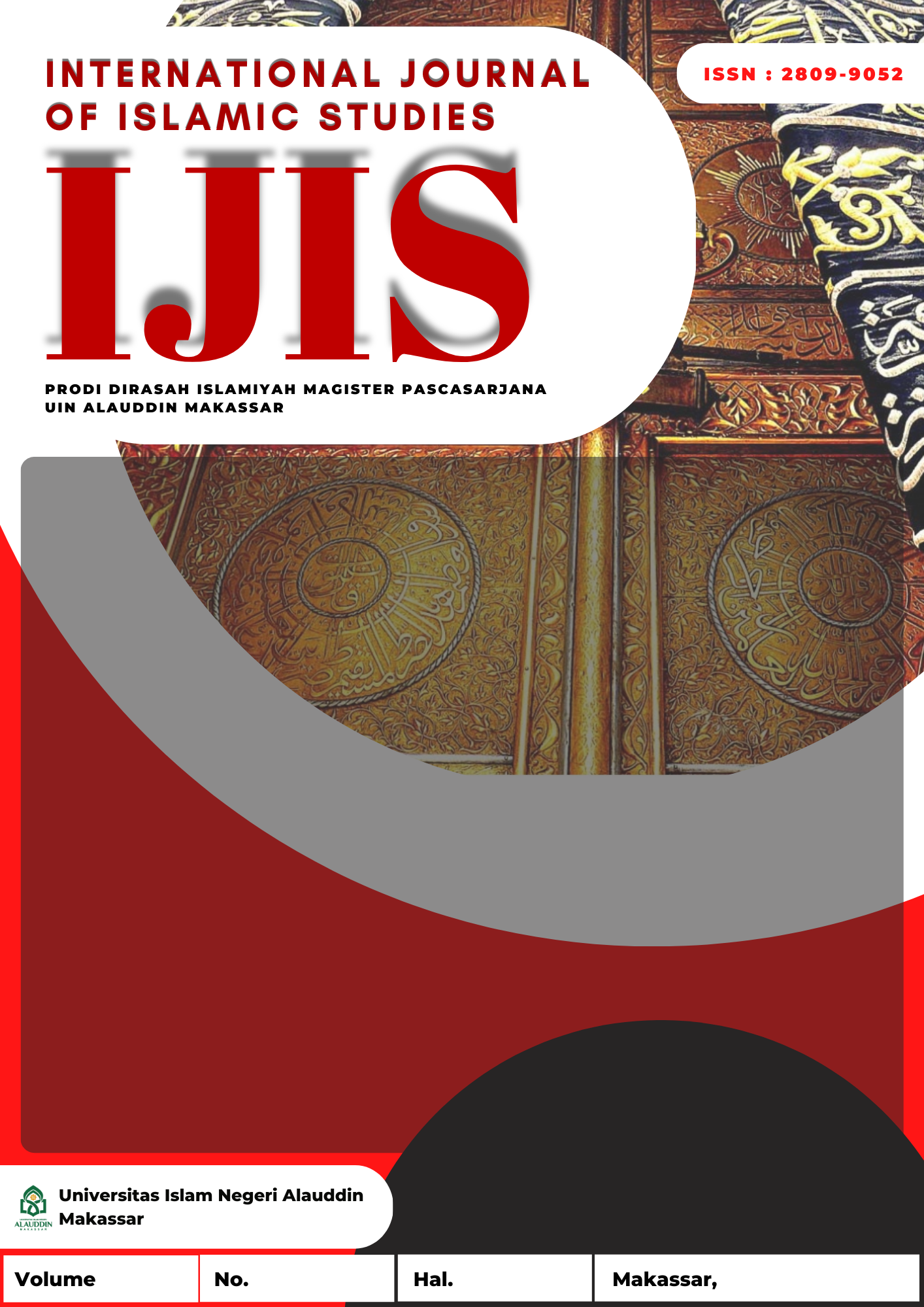Muhammadiyah Cultural Da’wah Towards The Kalomba Tradition in Sinjai District (Study of Da'wah Messages)
Abstrak
The cultural da'wah of Muhammadiyah emphasizes the process of dynamization and purification of the developing culture or traditions of society, especially the Kalomba tradition in Erabaru Village, Tellulimpoe District, Sinjai Regency. The Kalomba tradition held for children is used as an obligation that must be carried out so that children do not get skin diseases such as boils, itching, and scabies. In implementing this tradition, several processes are carried out that have symbolic meaning. The aim of this research is to determine the message of Muhammadiyah's cultural da'wah towards the Kalomba tradition in Erabaru Village, Tellulimpoe District, Sinjai Regency. The type of research used was descriptive qualitative research, and the research approach used was a da'wah and communication approach named the Muhammadiyah cultural da'wah. The results of this study show that Muhammadiyah's cultural preaching message towards the Kalomba tradition in Erabaru Village, Tellulimpoe District, Sinjai Regency shows that the symbolic meaning of the process of the Kalomba tradition, which contains good values in accordance with Islamic teachings, must be maintained, developed, and used as an example. Meanwhile, symbolic meanings that are in contrast with Islamic teachings must be fixed and purified again so they can be appropriate to the principles of Islamic teachings. In general, the implementation of the Kalomba tradition is contrary to Islamic teachings because of the food offering, and incense is used as a condition for the validity of the Kalomba and an intermediary for prayer acceptance.
Referensi
Sriana. Antropologi Sosial Budaya. Cet.1; Jawa Tengah: Lekeisha, 2020.
Jayadi, Karta. “Kebudayaan Lokal sebagai Sumber Inspirasi”, Jurnal Seni Budaya vol. 12 no. 2, (2014), h. 116.
Aliyudin, Mukhlis. “Dakwah Kultural dalam Upacara Adat Ngalaksa”, Jurnal Ilmu Dakwah:Academic Jornal For Homiletik studies vol. 10 no. 2, (2016), h. 106.
Nurhayati, St. dkk. Muhammadiyah dalam Perspektif Sejarah Organisasi dan Sistem Nilai. Cet. 1; Yogyakarta: TrustMedia Publishing, 2018.
Rusydi, St. Rajiah. “Peran Muhammadiyah Konsep Pendidikan Usaha-usaha dibidang Pendidikan dan Tokoh”, Jurnal Tarbawi vol. 1 no. 2, h. 141.
Nashir, Haedar. Memahami Ideologi Muhammadiyah. Cet. 1; Yogyakarta: Suara Muhammadiyah, 2014.
Ismail, Ilyas. Filsafat Dakwah Islam:Rekayasa Membangun Agama dan Peradaban. Jakarta: Prenadamedia Group, 2011.
Asmar, Afidatul. “Genealogi dan Strategi Dakwah Kultural Nu”, Jurnal Studi Keislaman vol. 13 no. 1, (2018), h. 169-170.
Suparto. “ Dakwah Kultural Muhammadiyah Antara Pembaharuan dan Pembauran “, Jurnal El-harakah vol. 11 no. 2, (2009), h. 164.
Syahraeni, A. “Dakwah Kultural Muhammadiyah di Kabupaten Gowa”. Disertasi. Makassar: Program Pascasarjana Universitas Islam Negeri Alauddin, 2012.
Mustakimah. “Tradisi Molonthalo dalam Masyarakat Gorontalo”. Disertasi. Program Pasca Sarjana Universitas Islam Negeri Makassar.
Katu, Mas Alim. Kearifan Maanusia Kajang. Cet. 1; Makassar: Pustaka Nusantara Padaidi 2005.
Sari, Kartika. Sejarah Peradaban Islam. Cet. 1; Bangka: Shiddiq Press, 2015.
##submission.copyrightStatement##
##submission.license.cc.by-nc-sa4.footer##Authors who publish with this journal agree to the following terms:
1) Authors retain copyright and grant the journal right of first publication with the work simultaneously licensed under a Creative Commons Attribution License that allows others to share the work with an acknowledgement of the work's authorship and initial publication in this journal.
2) Authors are able to enter into separate, additional contractual arrangements for the non-exclusive distribution of the journal's published version of the work (e.g., post it to an institutional repository or publish it in a book), with an acknowledgement of its initial publication in this journal.
3)Authors are permitted and encouraged to post their work online (e.g., in institutional repositories or on their website) prior to and during the submission process, as it can lead to productive exchanges, as well as earlier and greater citation of published work (See The Effect of Open Access).







